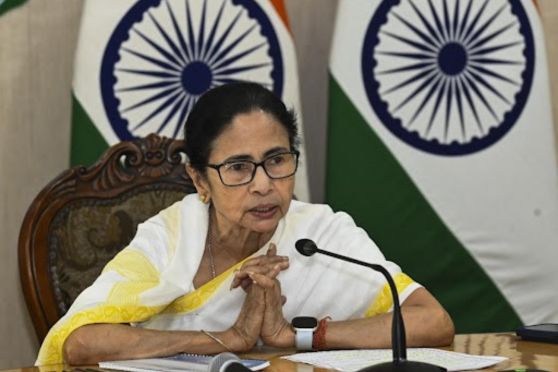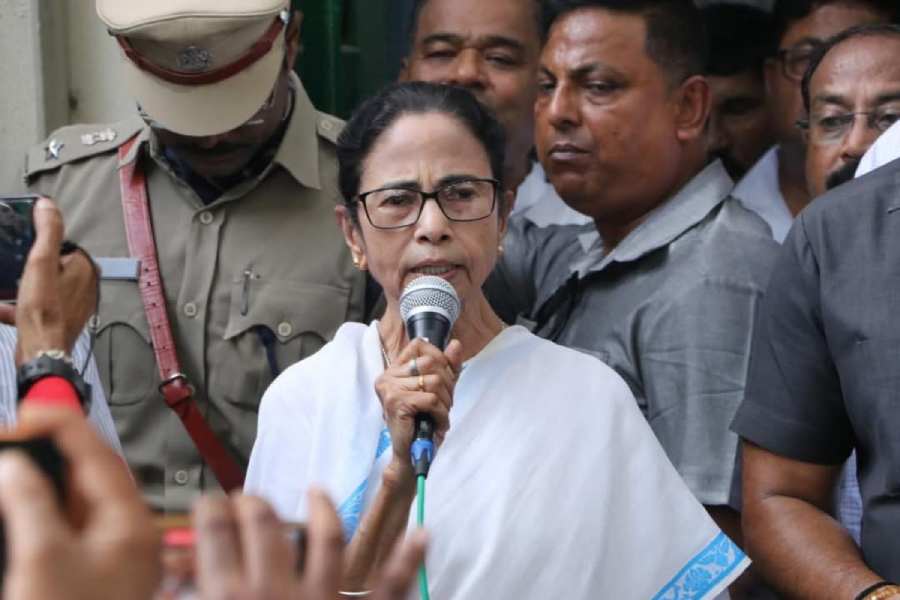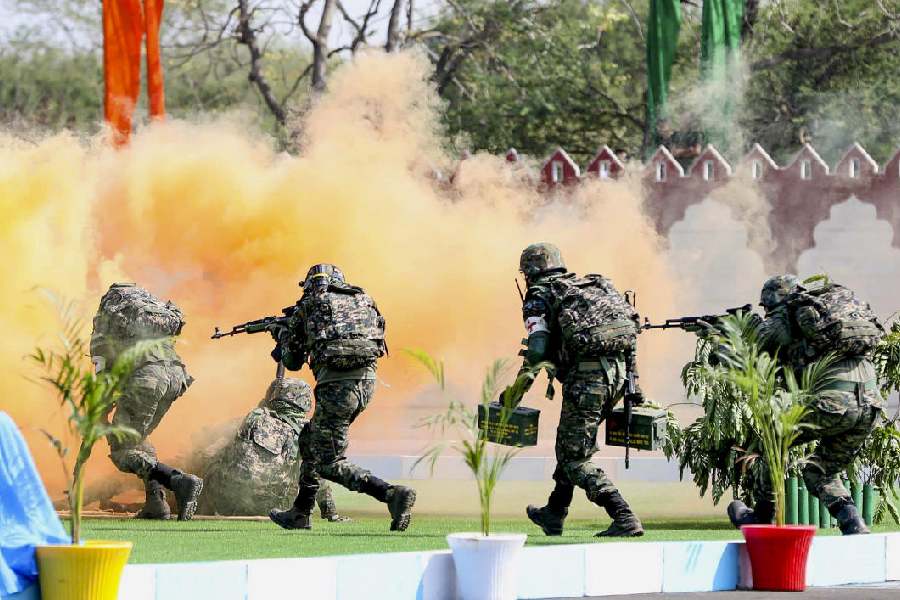 |
I know parents, who come to the cricket centres with their sons and stay on at the ground for the entire duration of the session. Some parents work overtime to befriend cricket officials and selectors, too, says a cricket coach in Ranchi.
That’s not very surprising, especially after the heights scaled by Mahendra Singh Dhoni, the blue-eyed boy of Indian cricket. If investing in kits that can cost anything from Rs 3,500 to Rs 10,000, or pushing them to camps, can help their kids scale that height, parents seem to be only too willing.
When youngsters are willing to slog for hours, and their parents ready to shell out their slogging costs, it’s only natural that camps should mushroom at an impressive rate. Many former state cricketers, too, are involved in propping them up, with some of the promoters of the camps having actually opted for early separation scheme from different companies to start these camps.
The mushrooming of the centres has acted as a catalyst in generating further interest in a game that is already the most popular in the country. It’s a cricket story all the way. Other games like tennis, hockey, football and basketball can take a backseat. Barring Tata Steel, which runs training centres for various games, there are very few centres which promote these other games in a systematic way. Cricket, very clearly reigns supreme.
The steel city has at present seven coaching centres — Jharkhand Cricket Academy (JCA), Tata Steel Training Centre, Jarial Coaching Academy, Jamshedpur School of Cricket (JSC), Cricket Coaching Academy, School of Cricket and Jamshedpur Blues. Riverview Cricket Coaching Centre has since downed shutters. Ranchi, too, boasts of at least eight coaching centres being run by former Ranji players, and some NIS-trained coaches.
Of the eight centres, the one at Shyamali Colony is run by former Ranji players Subhash Chatterjee and Chanchal Dutta Gupta, supported by veteran left-arm spinner Kishore Chakravarty. The one at JAP Ground is run by former Ranji players Anwar Mustafa and Satish Singh. Among the two NIS-trained coaches, Chanchal Bhattacharya trains boys of Grossner College, the only college known to have regular cricket coaching sessions, and A.R. Rahman runs the coaching centre at Army School. While Hehal Sporting Club is the only one run and managed by former cricketers.
While the public often raises questions about the infrastructure facilities available at the centres coming up, the coaches and promoters of the centres are also not always happy with the attitude of those joining. Subhas Chatterjee feels it strange that the first query of parents often is what kind of support they could give to their kids. Which meant, if they could push them into league matches.
“We tell them our responsibility is only to teach them cricket and its finer points. We cannot do anything about their selection in the state or the national team,” he said. Taking advantage of this attitude, some coaching centres claim proximity to cricket officials to lure people to their centres.
V. Venkat Ram, state Ranji coach, doesn’t mince words about the state of some of the coaching centres coming up. “One needs to work on the developmental aspects of the game. Tell me, how many coaching centres are concerned with those aspects?” he questions.
Venkat, a National Cricket Academy (NCA) Level-III coach, who runs the JCA at Ulyan locality, points out that he is more concerned about developing skills of boys belonging to poor economic strata. “I think English-medium students take cricket coaching just for fun. I don’t blame them, as they have the pressure of studies. Poor students of government schools are more serious in pursuing the game,” he observes.
But about coaching centres minting money, he doesn’t agree. Not always, is his feeling. Talking about his centre, he pointed out that it was new and in fact money had to be pumped in for its infrastructure. “I am looking for sponsors to help me out,” he added.
Randhir Singh, a former national-level seamer, and promoter of Jarial Coaching Academy, agrees with Venkat that cricket is not just about learning to bat or bowl. “I also work towards their personality development. Cricket is not just batting and bowling,” he pointed out.
Singh, a former state Ranji coach, also believes that it’s more talked about than a reality that camps run profitably. “I don’t know about others, but we are not earning any money. In fact, I have to bear the expenses from my own pocket,” he claims. Though he did admit, it’s not as if none of the centres were making profit.
K.V.P. Rao, an ex-Bihar Ranji captain and NCA Level-II coach, says that the scope to make a profit is always there, but it’s more through tournaments and sponsorships. While Harbhajan Singh, the head of sports, Tata Steel, feels charging a nominal sum from the wards actually makes them more serious learners. “We charge Rs 75 from children of Tata employees, and Rs 125 from non-employees,” he said.
Getting the wards is not enough, obviously. Once there, they expect modern techniques, which can mould them to be the future Dhonis. Subroto Mukherjee, a former Ranji player who runs the JSC, says innovation is the key. “Innovations change the thought process of the wards. I also make them practice with tennis balls, so that they are adept at bouncing off deliveries,” he said. JSC is the only coaching camp which has floodlights to boast, he informs.
Located at the Circuit House Area, the upscale locality of Jamshedpur, the centre also organises tournaments, which include inter-school matches, to provide the much-needed match practice to the trainees.
While the general perception is that such centres are mushrooming, Manik Ghosh, a former district-level cricketer and coach who runs SAI cricket coaching centre in Ranchi, has different views.
“When Dhoni was first selected to play for India, there was a sudden spurt in the number of boys who came to learn cricket, but that did not last for long. Many may have realised they were not up to it and would not be able to handle the work and play for Team India, and the number of dropouts started increasing,” he said.
It’s not easy running such centres, he says. Lack of good grounds and poor infrastructure support are only part of the problems, most of the coaches moan. Chatterjee, of Ranchi, rued that though the spotlight had fallen on the state because of the spectacular rise of Dhoni, the basic facilities still needed a long way to go. “We do not even have all-India junior tournaments, which are necessary for the players’ encouragement,” he said. Which may actually leave all the enthusiasts under the sun wondering where to go, having honed their skills.










